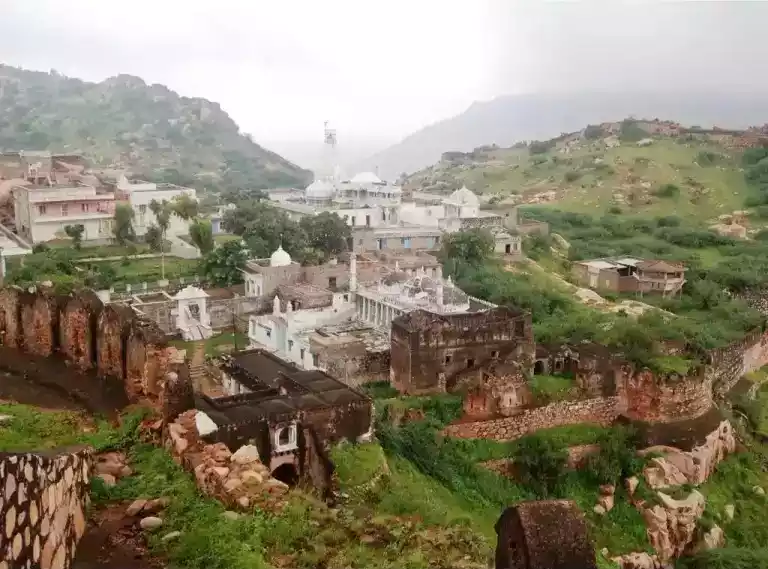Discover Jalore: The Gem of Rajasthan
Introduction
Jalore, a district in the Indian state of Rajasthan, is a land rich in history, culture, and natural beauty. Nestled in the southwestern part of Rajasthan, Jalore is renowned for its architectural marvels, vibrant traditions, and delectable cuisine. This article provides an in-depth exploration of Jalore, covering its demography, culture, geography, cuisines, history, notable figures, and administration.
Demography
Jalore district has a diverse population, comprising various communities and ethnic groups. According to the 2011 Census of India, the district has a population of approximately 1.83 million people. The male population constitutes about 52%, while females make up 48%. The literacy rate in Jalore stands at around 54%, with male literacy at 70% and female literacy at 38%.
Population Distribution
- Rural vs. Urban: A significant portion of Jalore's population resides in rural areas, with agriculture being the primary occupation. Urban centers like Jalore town and Bhinmal provide economic opportunities and are more densely populated.
- Communities: The district is home to various communities, including Rajputs, Jains, Brahmins, and Scheduled Castes and Tribes, each contributing to the region's cultural tapestry.
Culture
Jalore's culture is a blend of traditional Rajasthani customs and local practices. The district is famous for its folk music and dance, which play a vital role in community celebrations and religious festivals.
Festivals and Celebrations
- Holi and Diwali: Like much of India, Jalore celebrates Holi and Diwali with great enthusiasm. These festivals are marked by vibrant colors, lights, and joyous gatherings.
- Gangaur: A festival dedicated to Goddess Gauri, celebrating marital fidelity and prosperity. Women dress in traditional attire and participate in processions and rituals.
- Teej: Celebrated by women, Teej marks the arrival of the monsoon season. It involves fasting, singing, and dancing.
Traditional Attire
Men in Jalore typically wear dhotis, kurtas, and turbans, while women adorn themselves in ghagras (long skirts), cholis (blouses), and odhnis (veils). The attire is often colorful and embellished with intricate embroidery and mirror work.
Geography
Jalore is located in the southwestern part of Rajasthan and is bordered by the districts of Barmer, Sirohi, Pali, and Jodhpur. The district covers an area of approximately 10,640 square kilometers.
Topography and Climate
- Topography: The terrain of Jalore is primarily semi-arid, characterized by sandy plains and rocky hills. The Aravalli Range extends into the northeastern part of the district, adding to its geographical diversity.
- Climate: Jalore experiences extreme temperatures, with hot summers and mild winters. The average temperature in summer can soar up to 45°C, while in winter, it ranges between 10°C to 25°C. The district receives an average annual rainfall of around 400 mm, primarily during the monsoon season.
Natural Resources
Jalore is known for its granite reserves, which are extensively mined and exported. The district also has rich deposits of minerals like quartz, feldspar, and gypsum.
Cuisines
Jalore's cuisine reflects the traditional flavors of Rajasthan, characterized by its use of spices, lentils, and dairy products. The local dishes are not only delicious but also adapted to the region's climate and agricultural practices.
Popular Dishes
- Dal Baati Churma: A quintessential Rajasthani dish consisting of baked wheat balls (baati) served with spicy lentils (dal) and sweetened cereal (churma).
- Gatte ki Sabzi: Gram flour dumplings cooked in a tangy yogurt-based curry.
- Bajre ki Roti: A type of flatbread made from pearl millet flour, often accompanied by garlic chutney and buttermilk.
- Ker Sangri: A traditional dish made from dried berries (ker) and beans (sangri), seasoned with local spices.
History
Jalore's history is a testament to its strategic importance and cultural richness. The district has been a significant center of power and culture since ancient times.
Ancient and Medieval Periods
- Early Settlements: Archaeological findings suggest that the region was inhabited during the prehistoric period. It later became part of the Mauryan Empire and subsequently the Gupta Empire.
- Jalore Fort: Built in the 10th century by the Paramara dynasty, Jalore Fort is a magnificent structure perched atop a hill. It played a crucial role in the region's defense and witnessed several battles, including sieges by the Delhi Sultanate.
- Chauhan Dynasty: In the 12th century, Jalore came under the control of the Chauhan rulers, who significantly contributed to its architectural and cultural development.
Modern Era
During the British colonial period, Jalore was part of the princely state of Marwar. Post-independence, it became a district of Rajasthan. The region has continued to develop, with advancements in infrastructure, education, and healthcare.
Notable Figures
Jalore has produced several notable figures who have made significant contributions in various fields.
Poets and Authors
- Vidyapati: A renowned poet and scholar from the medieval period, known for his devotional poetry and literary works.
- Sundar Das: A famous poet from the Bhakti movement, whose compositions reflect deep spirituality and devotion.
Modern Personalities
- Kalpana Jain: An acclaimed journalist and author, known for her investigative journalism and contributions to literature.
Administration
Jalore district is administratively divided into several tehsils, including Jalore, Bhinmal, Ahore, Raniwara, and Sanchore. Each tehsil is further subdivided into villages and towns.
Governance Structure
- District Collector: The administrative head of the district, responsible for implementing government policies and maintaining law and order.
- Panchayati Raj Institutions: The district follows the Panchayati Raj system, with elected representatives at the village (Gram Panchayat), block (Panchayat Samiti), and district (Zila Parishad) levels.
Development Initiatives
The district administration has undertaken various initiatives to promote socio-economic development. Key areas of focus include improving agricultural productivity, enhancing educational facilities, and providing better healthcare services.
Suggested Diagram
Conclusion
Jalore, with its rich heritage, cultural diversity, and natural beauty, is a district that captivates the hearts of those who visit. From its ancient forts and vibrant festivals to its delectable cuisine and notable personalities, Jalore offers a unique glimpse into the soul of Rajasthan. As the district continues to develop, it preserves its traditions while embracing progress, making it a fascinating destination for both history enthusiasts and modern travelers alike.
